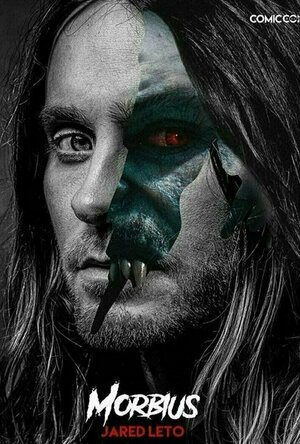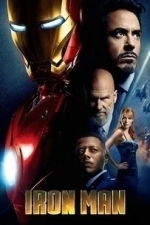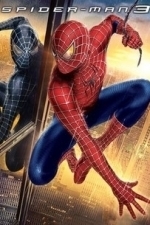
Zombie Deathmatch
Games and Entertainment
App
2036 AD. A genetically engineered Serum transforms humans to zombies. A new evil, Papa Rainbow,...

Imperial: War of Tomorrow
Games
App
Welcome to the military world following a global apocalypse that splintered the map into factions...

Tank Battle: Game Bắn Tăng 3D
Games
App
Are you ready for the War III ? Download now one of the best tank games, it's totally FREE now! ...

Gods and Glory: Throne wars
Games and Stickers
App
Throw yourself into intense and tactical real-time fantasy PvP strategy. Clash with warriors...
Gareth von Kallenbach (980 KP) rated Morbius (2022) in Movies
Apr 5, 2022
bits from the comic book but it clearly isn’t canon. It is an adequate anti-hero origin story for Phase 4 which gives us the backstory of Morbius’ creation.
Morbius has a rare blood disease. As a child, he made his best friend Milo/Lucien (Matt Smith), a promise to find the cure for their shared illness. Michael, in his quest for the cure, became the youngest scientist to win the Nobel Prize from his development of artificial blood.
He works with fellow scientist Martine Bancroft (Adria Arjona) who becomes his love interest.
Morbius has been working on vampire bats and the abilities within their blood. Once the formula has stabilized, he begins human trials on himself. In doing so, the serum that he has developed transforms him into a vampire that needs human blood to sustain his existence.
The film seems to have dropped the trail to lead the audience to logical conclusions. There are questions that need to be answered which would help flesh out the actions of the characters.
Why the serum, if the reason is to create a cure, why did the bat and human combination mutate instead of the blood changing?
There are points throughout the film that feel like critical explanatory lines were edited out.
Some scenes had witty banter between Michael and Milo. It would have been good to see Morbius enjoy his transformation from his weak, ill state to the Vampire.
The film was good. It definitely could have been better with more information. I wanted to understand motivation by the actors indicating motive or have red herrings thrown through the film.
The best parts for me were the moments where he stumbled upon his new abilities. He observes them like the scientist he is and takes it as data, in order to understand the changes.
The CGI was muddy, in trying to show movement as quick. What it looked like was trying to
convey speed, but in doing so, ended up having what showed up as squiggly lines instead.
I liked it, but didn’t love it mainly for what it seemed to lack, continuity. I think for an origin film, the character needs to be brought out as clean as possible in order to develop solid character traits.
If you go see the movie, there are two end credit scenes. There are a couple situations that you go see the movie, there are two end credit scenes. There are a couple situations that lead into the Multiverse of Magic. I am definitely looking forward to that film.
3 stars out of 5
Gareth von Kallenbach (980 KP) rated Iron Man (2008) in Movies
Aug 14, 2019
Robert Downey JR. stars as Tony Stark a Billionaire playboy who owns a vast company that is known mainly for manufacturing weapon systems. When the film opens, Stark is ambushed shortly after a weapons demonstration in Afghanistan and is wounded by the attackers who take Stark into captivity.
Using a device to keep the shrapnel from his vital organs and thus keep him alive, Stark is forced to create a weapon for his captors who plan to use the creative genius of Stark for their own nefarious schemes.
Stark turns the tables on his captors and devices a special suit which allows him to escape, and eventually make his way back to America after three long and harrowing months of captivity.
One back in home, Stark starts to take stock of his life and realizes that many of the weapons he designed to protect America are now being used by other factions to kill those they were designed to protect. When Stark announces to the press that he is stopping the manufacture of weapons by his company he is viewed as suffering from the long captivity and finds himself at odds with the shareholders and board of directors, as well as his long time advisor and friend Obadiah Stane (Jeff Bridges).
Undaunted, Stark begins to build a prototype suit in his lab, and soon emerges as an iron clad crusader who is obsessed with keeping the bad guys from using the weapons his company created against the innocent.
Assisted by his friend in the military Colonel Rhodes (Terrance Howard) and the lovely Pepper Potts (Gwyneth Paltrow), Tony Stark soon finds himself caught in an even more dastardly plot, and needs every ounce of his creativity and his latest invention to keep the world safe.
The movie is a pure delight and it was nice to see a summer movie that actually had some plot and character development, and did not try to dumb the material down for the audience or let the film be carried entirely by the special effects.
The movie also has some moments of good humor which work well within the film as much of it comes from the quick wit of or at the expense of Stark.
Robert Downey JR. is perfect in the role as he perfectly captures the character without making him to over the top as often is the case in many comic adaptations. He portrays Stark exactly as he is portrayed in the comics, a hard drinking womanizer, who is forced to take stock of his life, and make changes.
The supporting performances by Paltrow, Howard, and Bridges help make the film stand out as does the solid work by Director John Favreau who clearly has a grasp on the character and story and thankfully took the time to establish the characters and the premise before rushing Downey into the Iron Man suit.
When the action comes it is solid, and shines with modern effects, but never once overshadow the fact that this is a character driven story. The action teases the audience with the full potential of the suit, which I am sure will be explored further in future films.
Many times summer films arrive in a frenzy of hype and expectations only to be little more than thinly plotted films awash in FX that fail to satisfy. I am happy to say that “Iron Man” is the rare exception to the recent trend and is easily one of the best Super Hero Films ever crafted.
Gareth von Kallenbach (980 KP) rated Spider-Man: Into the Spider-Verse (2018) in Movies
Jul 2, 2019
It’s hard to believe that the movie I would end up saying that about would be an animated one. Nevertheless, I left the theater this time feeling a sense of warm satisfaction for the first time since Sony originally graced us with Tobey Maguire.
Spider-Ma n: Into the Spider-Verse is the most poignant statement that Sony could make about their recommitment to all things webslinger. The star-studded cast for this film includes Academy Award winners like Nicolas Cage and Mahershala Ali as well as the likes of Lily Tomlin, Chris Pine, and John Mulaney. But those aren’t even the main characters. Along with the stellar writing, an unbelievably well curated soundtrack and art direction that can only be described as sublime, Into the Spider-verse was exactly what we all needed right now.
This entry into the world of Spider-man actually brings us up to date with the comics by introducing us to Miles Morales (Shameik Moore), the black teenager from Brooklyn who has taken up the mantle of Spider-man following the death of Peter Parker (well, one of them). Witnessing Parker’s demise at the hands of The Kingpin, Morales promises to help destroy the weapon that killed him. Little does he realize that the weapon has opened a hole in the multiverse and multiple other spider men, women (and things) have been drawn through the rift into his universe. They all have to work together to get back to their own universes and to prevent the destruction of reality itself.
The soundtrack for this movie really brings Spider-man into modern times. Artists such as Kendrick Lamar, Eminem and Run the Jewels speak to the Brooklyn upbringing of Morales as the new webslinger. At the same time, it also serves up artists like Marshmello, Pendulum and Prodigy who demonstrate how action can be fueled through their EDM stylings. The music here is the most perfect complement to each part of the action and drama alike. Just as you will see multiple different Spider-men, you’ll be taken through a wide spectrum of musical stylings to match each hero.
The animation style displayed here really can’t be appropriately categorized. Part graffiti, part moving comic book and part CGI, the film brings together numerous different styles and effects such as cell-shading, anime breaks and word bubble subtitles to create something truly unique. The medium itself is perfect because we can finally see everything that a live-action film couldn’t execute. But unlike other animated superhero movies, this feature brings the artistic nature of illustrations to new levels. The mix of styles is unlike any cartoon you’ve ever seen (or are likely to see again). Beauty and realism combine to actually take you into a comic book instead of simply translating one for the screen.
The writing for Into the Spider-verse achieves something that few producers have managed to do in the animation field: it’s equally appealing to both children AND adults. These days it’s rare to see an animated superhero film being made for the big screen instead of going straight to television. As a result, Into the Spider-verse offers up plenty of quick witted and intelligent jokes for adults without crossing the lines of propriety. In addition to the quality humor, the story includes a number of emotional moments that all manage to evoke real feelings instead of coming off as just pandering. So, if you’re planning to take your children to this movie, you’ll certainly both enjoy it.
All-in-all, Into the Spider-Verse brings together all of the best elements in film-making and executes them to perfection. Writing, drawing, music all come together to create an experience that you have to see to believe. The only disappointing part here is that we had to wait 16 years for a Spider-Man movie this well done.

Flight Alert : Impossible Landings Flight Simulator by Fun Games For Free
Games and Entertainment
App
Feel like a HERO! face dangerous situations, land safely and save everyone! + Immersive scenarios:...
Smashbomb (4687 KP) created a post in Smashbomb AMA
Mar 26, 2019 (Updated Mar 26, 2019)
Ryan Hill (152 KP) rated Spider-Man 3 (2007) in Movies
Jul 1, 2019 (Updated Jul 3, 2019)
Therein lies my biggest problem with "Spider-Man 3". I liked the Venom character as a kid, but in all honesty having 4 villains in the same film (Harry, Marko, the black symbiote itself, and eventually Venom) was just too much at once. From the standpoint of a fan, I'd have preferred that Venom be saved for a future entry, so he could have taken center stage. By having him alongside both Marko and Harry Osborn, the story became rather confusing for many fans, and the film's box office suffered as a direct result. Overall, this film made less money across the board than its predecessor...all because of corporate greed.
That being said, I still enjoy the film on many levels, but knowing what caused the multi-arc story makes some moments bittersweet. The actors clearly enjoyed this ride, but something in general seemed a bit lacking. Looking back, I realize it was the Venom character. The fact of it essentially being forced into the narrative only made the tale confusing and hard to follow. It became one of those films many people have to watch more than once, just to understand it...and these days, audiences don't have a lot of patience for films with too many angles. Rightfully so, in my opinion.
Tobey Maguire, slipping into the spandex suit for a third try, really shows his acting range here, even more so than his diverse performance in "Spider-Man 2". From intense love to seething hatred (and everything in between), he really brings his game up to a whole new level. Kirsten Dunst shines again as Parker's star-crossed love, Mary Jane Watson. I liked her performance very much, and her singing in the film is beautiful. She's less helpless than in either prior entry, and far more confident. Bryce Dallas Howard (daughter of acclaimed director Ron) makes her first apearance in the franchise as the bubbling, exuberant, and gorgeous Gwen Stacy. I liked her character, but felt she didn't have much to do in the long run.
James Franco does an equally-remarkable turn, finally completing the journey that began at the end of the original film. He gives Harry a blend of jealousy, mystique, and severe determination. He also revisits the lighter tones of his role, for the scenes where Harry has amnesia. And in the finale, he shows that in his heart, Harry was truly a hero. Thomas Haden Church gave Marko both sentiment and menace, and turned what was originally a two-bit thug into a far more interesting character. Topher Grace played the "creepy" card as Venom, and gave Eddie Brock a know-it-all arrogance that makes you almost feel disgusted.
Aside from the criticisms surrounding Venom, I honestly didn't have a lot for this entry. Mary Jane is no longer in a water-drenched position (thank God!), so I was very relieved. I guess my main concern was that there were too many villians should of just stuck with Harry and Venom or Harry and sandman. And for anyone who asks why i haven't put the dancing scenes as a negative. I get a kick out of them what can i say?



